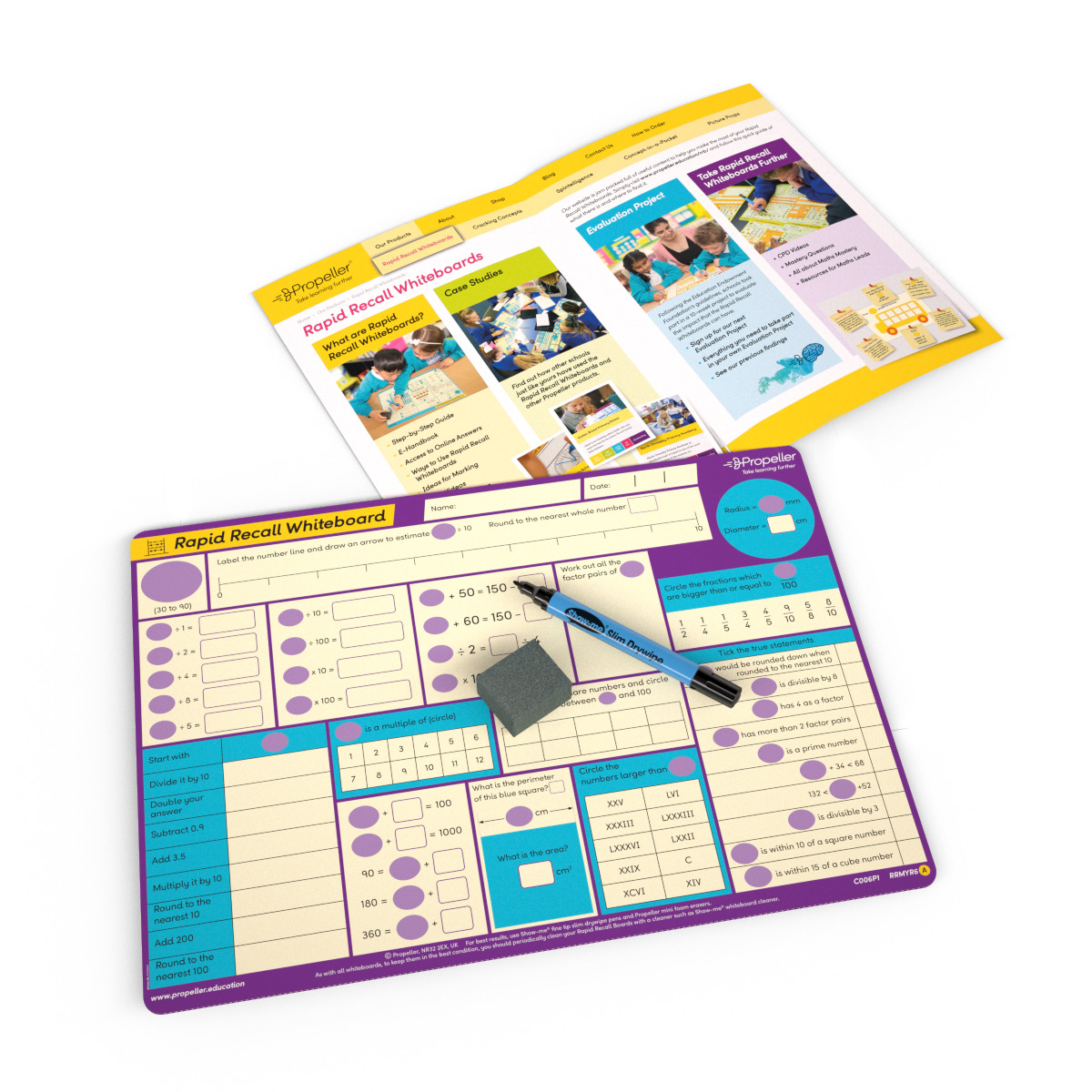Hey. You’re here because you want to find out more about the Rapid Recall Boards. That’s great. Let’s take a look together.
What is a Rapid Recall Board?
The Rapid Recall Whiteboards (bit long, isn’t it? Let’s call then RRBs) are A3 double-sided whiteboards for primary years 1-6. Each board is full of carefully crafted activities which help your students build fluency and recall of the key number objectives within the National Curriculum.
You choose a number from the range given, write it in the pre-printed shape, then use that number wherever you see the shape around the board. Just like ‘X’ in algebra.

Who can use the Rapid Recall Whiteboards?
You. Probably. If you’re a teacher who wants to take learning further with these interactive whiteboards. The RRBs were created by a senior Maths consultant, to promote discussion, refine recall skill and maintain fluency in your classrooms.
It’s fine, you want to see how they work. I’ve got you.
Here are some online interactive RRBs for you to see how they work (wow, you’re welcome), simply click your year group below and see for yourself!
There are a range of things you can do as a teacher to transform the boards from a whiteboard to a serious discussion piece, and a useful assessment tool. Let’s look at how you and your class could use the board.
So, how do I get started with the boards?
To get started with the RRBs, you must determine a number to use. It can be fun and engaging to switch it up, too. Here are two methods verified buyers recommend:
- Number of the Day
- You could do a number of the day, or week. That number can become the number which gets used on the board, incorporating Rapid Recall with many other activities.
- Make the choice of number and resulting discussion part of your class routine, encouraging pupils to think about their number and know some of the facts before choosing it.
- Each Child Chooses
- Some fantastic discussion can be generated around each pupil’s choice of number. You can also stipulate criteria for the number to gauge understanding, such as ‘your number must be odd, and not in the 5 times table’.
These are just a couple of suggestions. I’m sure you’ll find your own creative way to use them, though (please tell me, new ideas are always appreciated).
Completing the Board
Our fantastic customers have produced many ways to complete the boards. Here are just a few that you may like:
- Suggestion 1 – The Timed Snapshot
- How it works
- This is one of the simplest ways to use the boards and might be useful to do at the start and end of term to gauge overall progress.
- Once the number is chosen, pupils work individually and in silence for a set time limit, working through each section of the board.
- How it works
- Things to think about
- Would this approach be suitable for all children?
- How could you modify this approach for less confident children (working in pairs, on circled parts of the board only…)
- Questions to ask Pupils
- Did you work through the board in a particular order?
- Did you avoid certain parts? (If so, as a teacher, what could you ascertain if you see blank sections of a child’s board?)
- Did you choose the first section based on feeling confident in that area?
- Do you think that if you regularly practised in this way your time and fluency skills would improve?
- Suggestion 2 – Pilot and Navigator
- How it works
- Split pupils into pairs, they will alternate roles.
- The Pilot writes the answers on the board, but only after the Navigator has justified their reasoning for that answer. After 1 section of the board, swap roles.
- This method really helps pupils develop mathematical vocabulary, strategies, and reasoning skills.
- You may find it beneficial to give pupils a whiteboard to do workings out on.
- Things to think about
- How would you create your pairs?
- Would you change them?
- If you’d change them, how often?
- Questions to ask Pupils
- Did your partner not like certain areas of the board?
- Was there sections of the board which your partner did well on?
- What did your partner struggle with?
- What tips would you give your partner to improve?
Join the Community!
You can buy your own RRB for your class through this link.
Thank you for taking the time to read this. Until next time!
